You must be logged in to post a review.
10th (Prince of Wales’s Own Royal) Hussars – 1878.
€68.00
Figure to assemble and paint
Ref.: 03 – CRV
Weight: 250 grs.
Material: White Metal horse, resine the rider
Number of Pieces: 20
Historical Review:
Raised in 1715 as Humphrey Gore’s Regiment of Dragoons
1751 – 10th Regiment of Dragoons
1783 – 10th (Prince of Wales’s Own) Regiment of (Light) Dragoons
1811 – 10th (The Prince of Wales’s Own) Royal Regiment of (Light) Dragoons (Hussars)
1861 – 10th (Prince of Wales’s Own Royal) Hussars
1921 – 10th Royal Hussars (Prince of Wales’s Own)
1969 – Regiment amalgamated with 11th Hussars (Prince Albert’s Own) to form The Royal
Hussars (Prince of Wales’s Own)
Battle Honours:
Early wars: Warburg, Peninsula, Waterloo, Sevastopol, Ali Masjid, Afghanistan 1878–79, Egypt 1884, Relief of Kimberley, Paardeberg, South Africa 1899-1902.
The Great War: Ypres 1914 ’15, Langemarck 1914, Gheluvelt, Nonne Bosschen, Frezenberg, Loos, Arras 1917 ’18, Scarpe 1917, Somme 1918, St. Quentin, Avre, Amiens, Drocourt-Quéant, Hindenburg Line, Beaurevoir, Cambrai 1918, Pursuit to Mons, France and Flanders 1914-18.
The Second World War: Somme 1940, North-West Europe 1940, Saunnu, Gazala, Bir el Aslagh, Alam el Halfa, El Alamein, El Hamma, El Kourzia, Djebel Kournine, Tunis, North Africa 1942–43, Coriano, Santarcangelo, Cosina Canal Crossing, Senio Pocket, Cesena, Valli di Commacchio, Argenta Gap, Italy 1944-4.
The regiment was formed at Hertford in 1715 as Gore’s Regiment of Dragoons, one of 16 raised in response to the 1715 Jacobite rising. He was active in the Seven Years’ War from 1756 to 1763.
In 1779, the men designated “light dragoons” were detached from the Regiment to form a new regiment, the 19th Light Dragoons; in 1783, it became the 10th (Prince of Wales’s) Regiment of Dragoons (Light) in honour of the future King George IV.
In 1806, the regiment was redesignated, this time as the 10th (Prince of Wales’s) Regiment of Dragoons (Hussars), and sailed for Corunna in Spain in November 1808. During that year, in the Peninsula War (the English name for our War of Independence), he took part in the battles of Sahagún, Benavente and later in 1809 in the Battle of La Coruña. It returned to Spain in 1813, taking part in the battle of Vitoria, and continued fighting in France until the battle of Waterloo, where the regiment charged against the French infantry and cavalry.
In the Victorian era the regiment was sent to India in 1846 and then saw action at the Siege of Sevastopol in winter 1854 and at the Battle of Eupatoria in February 1855 during the Crimean War. In 1861, it was renamed the 10th (The Prince of Wales’s Own) Royal Hussars. The regiment saw action at the Battle of Ali Masjid in November 1878 during the Second Anglo-Afghan War and at the First and Second Battles of El Teb in February 1884 during the Mahdist War.
With the outbreak of the Second Boer War, the regiment sailed for South Africa in November 1899. After fighting at Colesberg, the regiment participated in the relief of Kimberley in February 1900. It was also involved at the Battle of Diamond Hill in June 1900. Following the end of the war in 1902 they went to India. Almost 375 officers and men left Cape Town on the SS Lake Manitoba in September 1902, arriving at Bombay the following month and was then stationed at Mhow in Bombay Presidency.
The regiment was next deployed in action on the North-West Frontier in 1909.
The regiment wore standard red dragoon coats with “deep yellow” facings until the dark blue uniform and crested helmet of light dragoon was authorized in 1784. Hussar dress was adopted through a series of separate measures, culminating with the introduction of a busby in 1809. Until 1914 the entire regiment wore dark blue hussar uniform for full dress with a red busby bag, yellow braiding, white plume and yellow stripes on their riding breeches. Officers had a distinctive pattern of criss-crossed gilt metal decoration on their pouch-belts, which gave the regiment its nickname of “The Chainy 10th”.
The figure wears the field uniform, with a khaki jacket, while at this date, blue trousers with yellow stripes were still worn for the troops and gold for the officers. The bugle cord was red, yellow and blue. The salacots were covered with a khaki cover. The bugle emblem can be seen on the upper right arm of the figure.
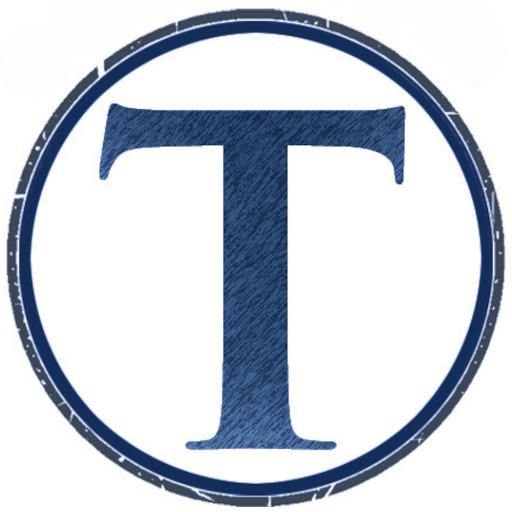
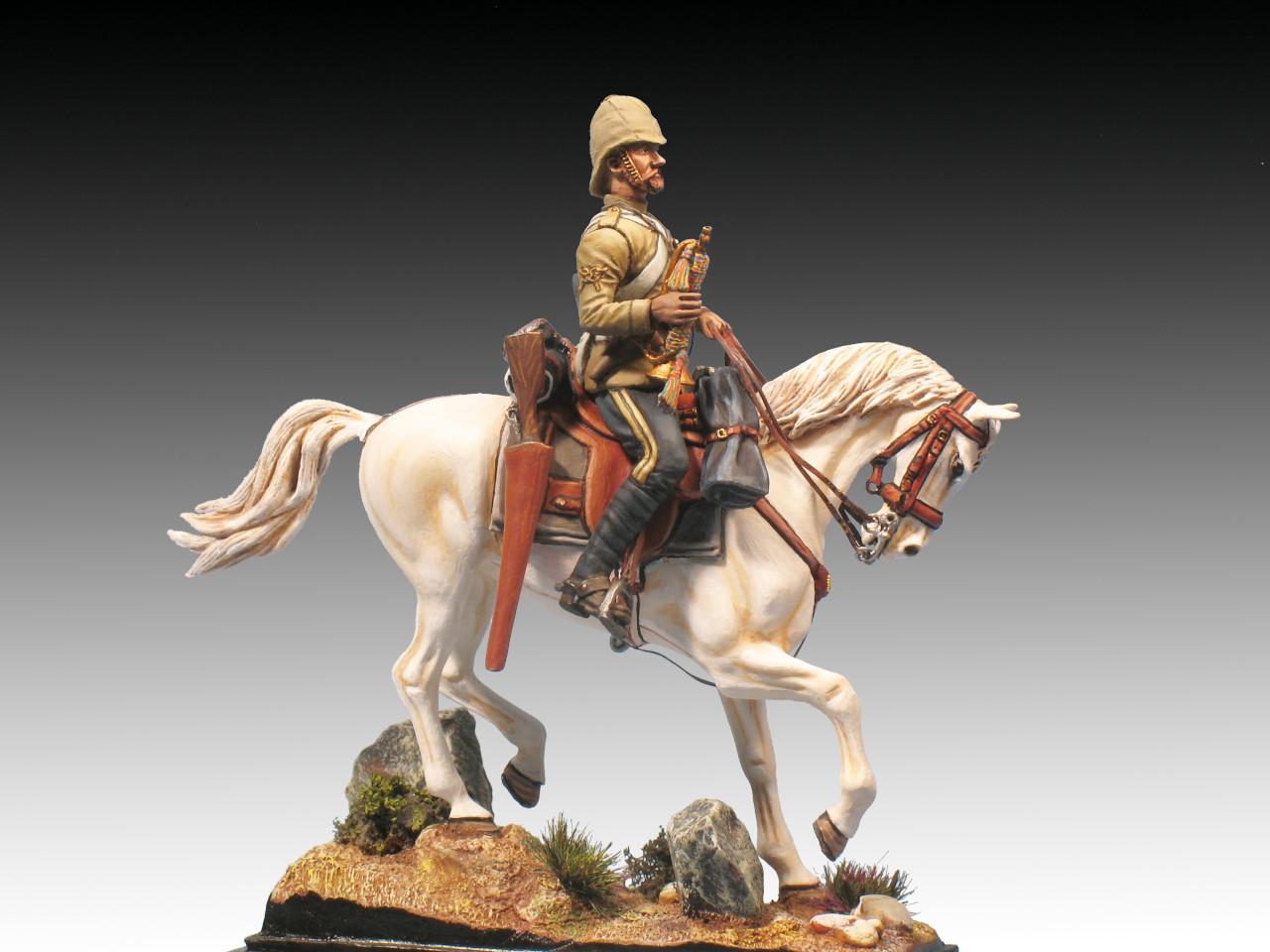
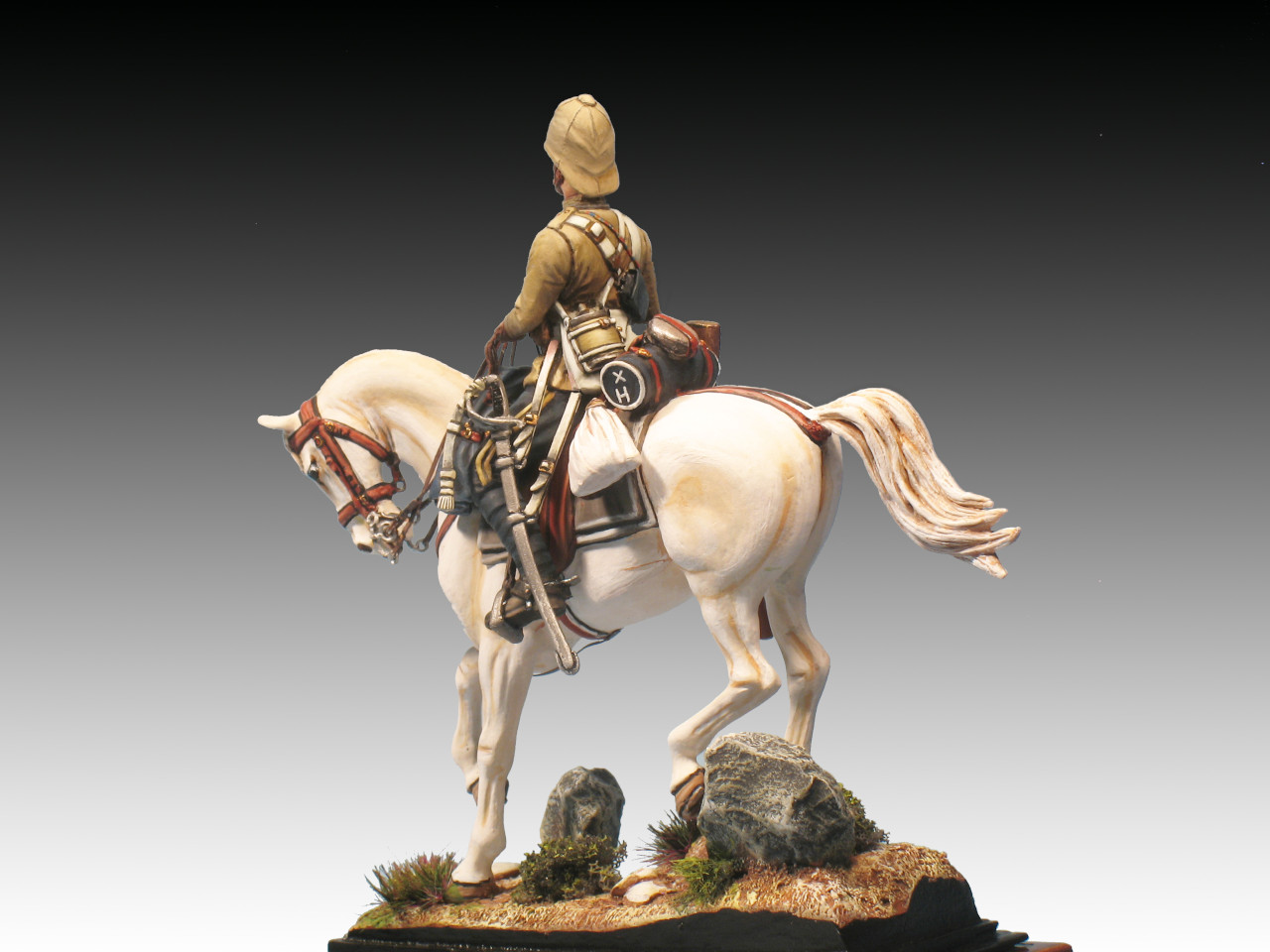


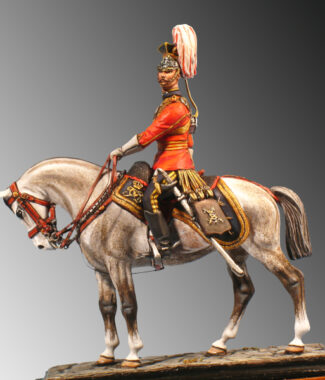
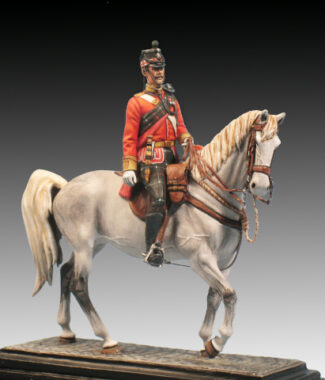
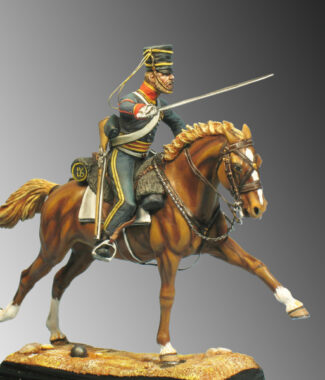
Reviews
There are no reviews yet.